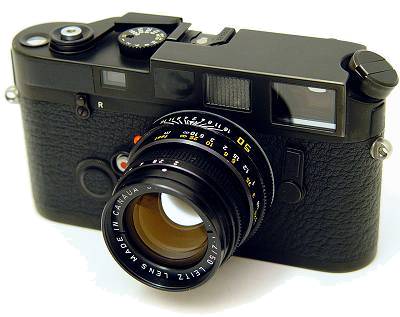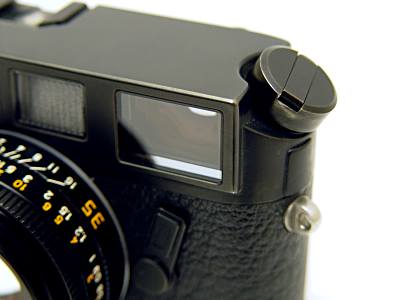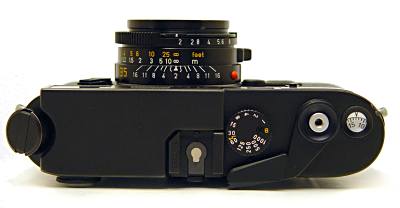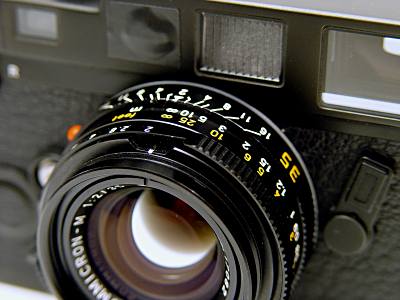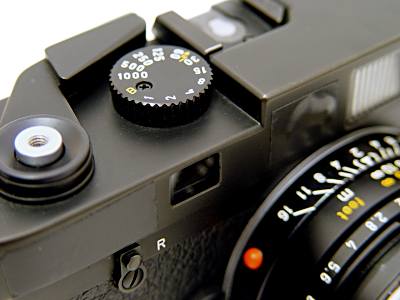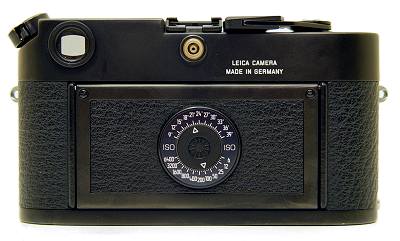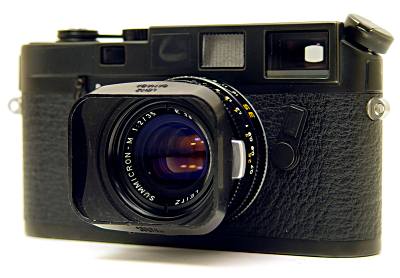|
The Leica M is one of the best known cameras ever produced. The M6 shown here was released in 1984 and follows a lineup of famous models such as the early screw mount Leicas, the revolutionary M3, which already was built in an almost identical housing, the "economy" model M2, the M1 without distance meter for the use in science and industry,the M4, M4-2, and the M4-P (P=Press). The latter is, except for numerous cosmetic details, almost identical with the M6. The most significant difference between the two is the built in light meter - the M4-P was to be used with a late version of the Leicameter, a light meter directly coupling to the exposure-time selector. For a detailed history and discussion of the Leica M models have a look at Peter Lausch's website. There was also the M5, a seventies model directly following the M4P, which firstly introduced an integrated light meter. It therewith was the first rangefinder with TTL metering. The meter system employed an CdS cell attached to an arm which was swept in front of the focal plane shutter - a mechanism that required so much space in the camera body that substantial enlargement of the latter was necessary. This made the outer appearance of the M5 much less elegant than its predecessors, a fact that probably was responsible for its rather low commercial success. In recent years, however, at least among collectors the M5 experiences a renaissance, leading to increasing prices of M5 bodies on the used market. Leica rangefinders are not only legendary since they opened up the 35mm era (and along with that a completely new form of fast, mobile, and uncomplicated photography). The Leica company right from the beginning of the production laid strong emphasis on quality, of the camera and of the lenses. The precision of the making is unparallelled and the whole spectrum of lenses, from the shortest wide angles to the 135 mm telephoto lens, are considered the best ever made. Some of the distinguishing features of this camera are
Here comes my personal opinion: The more I am using other rangefinders (e.g. those shown presented on this site) I become aware what a great camera the M6 is. The weight is perfect, the size is perfect, the meter system (operation and characteristics) is perfect, the rangefinder is brilliant, and the lenses are the best ever produced for 35 mm cameras. All other cameras have a their particular drawback - the Leica M has none. Although I really like 60s and 70s rangefinders of other manufacturers, this is my absolute favorite. The images show my M6 with black tape on the Leica engraving and sign in order to make it look more ugly and less attractive to thieves. I own two lenses, the Summicron 2.0/50mm and 2.0/35mm. These are both very pleasing in contrast and sharpness, but I hardly ever use the 50. I prefer short lenses anyway, and with the 35 the M6 is so compact that you can carry it in a waistbag (commonly used for keys and wallets) without any disturbance. The lenses are discussed here.
External Links |
|
